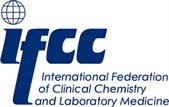3. Diagnostic Testing: Analytical and Clinical Aspects
Upon confirmation of a suspected case, specimens should be rapidly collected and tested. The Centers for Disease Control and Prevention (CDC) Interim Guidelines for Collecting, Handling, and Testing Clinical Specimens from Persons for Coronavirus Disease 2019 (updated April 8th) recommends collecting an upper respiratory specimen for initial diagnostic testing. The following specimens can be collected for swab-based testing: Nasopharyngeal specimen (preferred), Oropharyngeal specimen, Nasal mid-turbinate specimen and Anterior nares specimen. Lower respiratory tract specimen testing is also recommended by the CDC, if the specimens are available.
Nucleic Acid Amplification Tests (NAAT)
Real-time reverse transcription polymerase chain reaction (rRT-PCR) is the current gold standard for diagnosing suspected cases of COVID-19. rRT-PCR is a nucleic acid amplification test (NAAT) that detects unique sequences of the virus that causes COVID-19 (SARS-CoV-2) in respiratory tract specimens. The N, E, S, and RdRP are the viral genes currently targeted (WHO, Laboratory testing for coronavirus disease (COVID-19) in suspected human cases). A validated diagnostic workflow for detecting SARS-CoV-2 has been recently published by Corman and colleagues (PMID: 31992387), as follows: (a) First line screening: E gene, (b) Confirmatory screening: RdRP gene, and (c) Additional confirmatory screening: N gene.
The following table presents criteria for a case to be considered as laboratory-confirmed by validated NAAT assays according to the WHO:

In some cases, a negative result may be returned for a suspected case with a high likelihood of COVID-19 infection. If the negative result was concluded based on only an upper respiratory tract specimen, a lower respiratory tract specimen should be subsequently tested. Additional specimens eligible for testing include blood and stool (WHO, Laboratory testing for coronavirus disease (COVID-19) in suspected human cases).
Antigen Testing
Antigen assays belong to an additional class of pathogen detecting assays. Antigen testing relies on direct detection of SARS-CoV-2 viral proteins in nasopharyngeal swabs and other respiratory specimens, including saliva. Many manufacturers have released antigen tests for the detection SARS-CoV-2 viral proteins, applying lateral flow immunoassay (rapid detection) or chemiluminescence immunoassay (lab-based) technology. While the evidence regarding the sensitivity and specificity of these assays is scare, WHO released a guideline on using antigen testing in patient diagnosis. Key publications are also provided in the related Reference section page.
Currently Available Diagnostic Assays
Several in-house and commercial assays are currently being developed and optimized. Links to currently available in-house protocols can be accessed here via the World Health Organization. Countries who have no testing capacity or national COVID-19 laboratories with limited experience on COVID-19 testing are encouraged to send the first five positives and the first ten negative COVID-19 samples to WHO reference laboratories providing confirmatory testing for COVID-19. Additionally, the WHO also released a Laboratory Assessment Tool (LAT) which is designed to assess the capacity of existing laboratories which aim to implement COVID-19 testing: Access the tool!
- List of FDA Approved Molecular Diagnostic Assays
- FDA Policy for Emergency Approval
- List of Health Canada Approved Molecular Diagnostic Assays
- European Commission Guidelines on COVID-19 in vitro diagnostic tests and their performance
- FIND Diagnostics: Diagnostic Performance Data of Molecular and Serology Testing
Pre-analytical and Analytical Testing Issues
There are various pre-analytical and analytical issues that can affect diagnostic testing for COVID-19 infection. Some pre-analytical issues include improper collection, handling, transport and usage of swabs, as well as collection of inappropriate or inadequate material, interfering substances, and sample contamination. A common analytical issue is testing outside of the diagnostic window, in addition to active viral recombination and inadequately validated assays (PMID: 31992387).

In order to increase testing capacity and provide more flexible options for SARS-CoV-2 RNA screening, the prospect of patient self-collection of samples has been recently discussed. Indeed, the FDA recently authorized the first home test kit for COVID-19 (April 20 2020). While expanding consumer access to COVID-19 is important, various preanalytical considerations need to be considered, affecting sample quality and impacting result accuracy. These concerns are summarized in a recent letter from the AACC and supported by a recent publication by Sullivan and colleagues (PMID: 32310815).
Serological Testing:
There has been much debate regarding the current value of serological testing in COVID-19 diagnosis and monitoring. There is general concern regarding their use in the acute phase of infection as they detect infection too late in the course of illness (usually more than 7-10 days), they also may cross-react with serologic responses to seasonal coronaviruses and the rate and kinetics of serological response has not been clearly defined so far. However, there is anticipated value in using improved serological testing in the future for public and occupational health monitoring and assessment. Key publications are listed below.
|
Breath Testing:
Additional Resources Related to Testing:
Food & Drug Administration (FDA): FAQs on Diagnostic Testing for COVID-19 (Recently Updated with Guidance for Serology Testing)
John Hopkin’s Center for Health Security: Serology Testing for COVID-19
Public Health Laboratory Network: Statement on Point-of-Care Serology Testing for SARS-CoV-2
Public Health England: Evaluation of Roche Elecsys AntiSARS-CoV-2 serology assay for the detection of anti-SARS-CoV-2 antibodies
Royal College of Pathologists: Recommendations for verification and validation methodology and sample sets for evaluation of assays for SARS-CoV-2 (COVID-19)
Click on below titles to access the different sections.
Table of Contents:
3. Diagnostic Testing
4. Biosafety Guidelines for the Clinical Laboratory
5. Biochemical Monitoring of COVID-19 Patients
6. Other Educational Materials & Webinars
8. Vaccination
